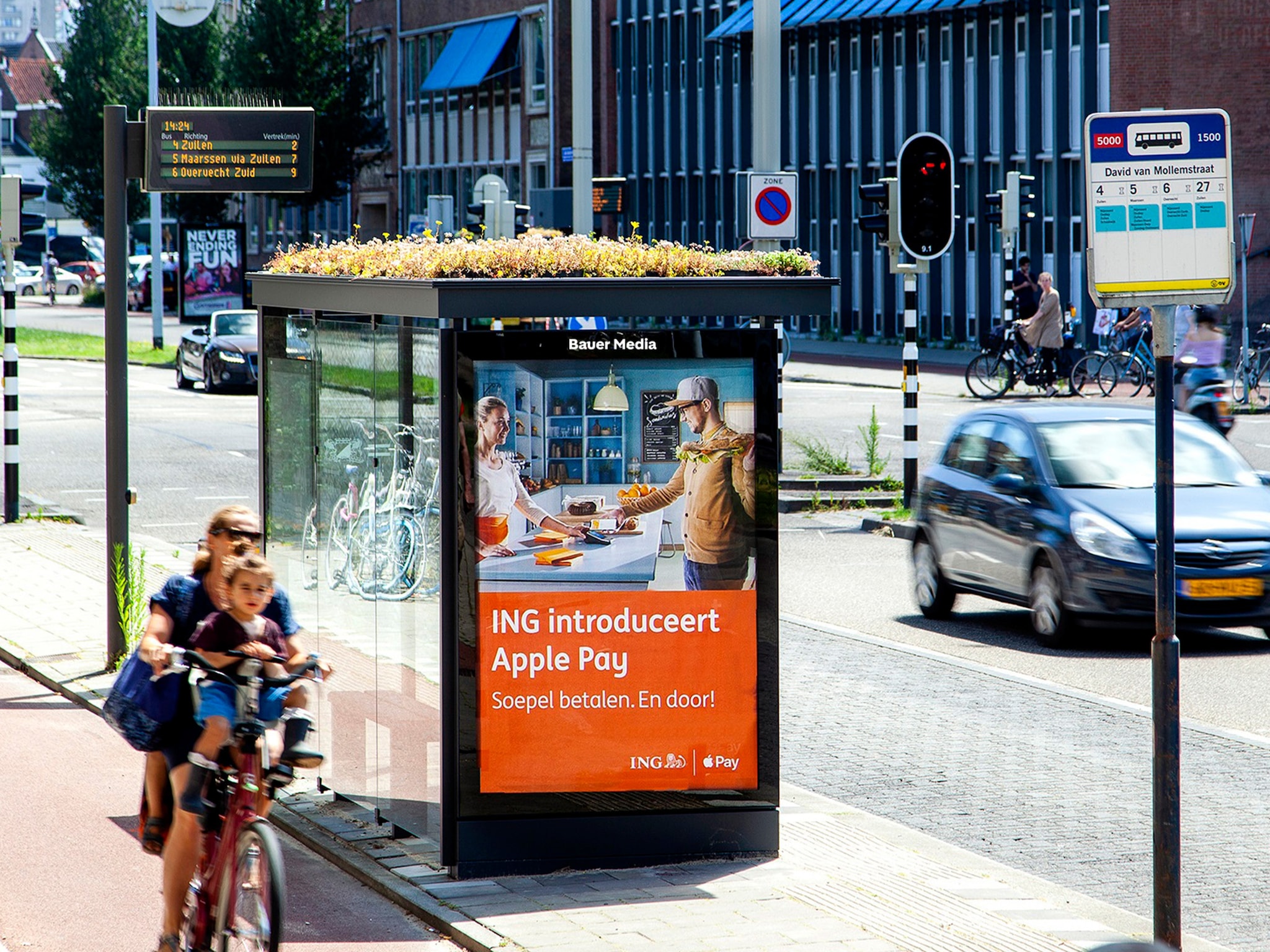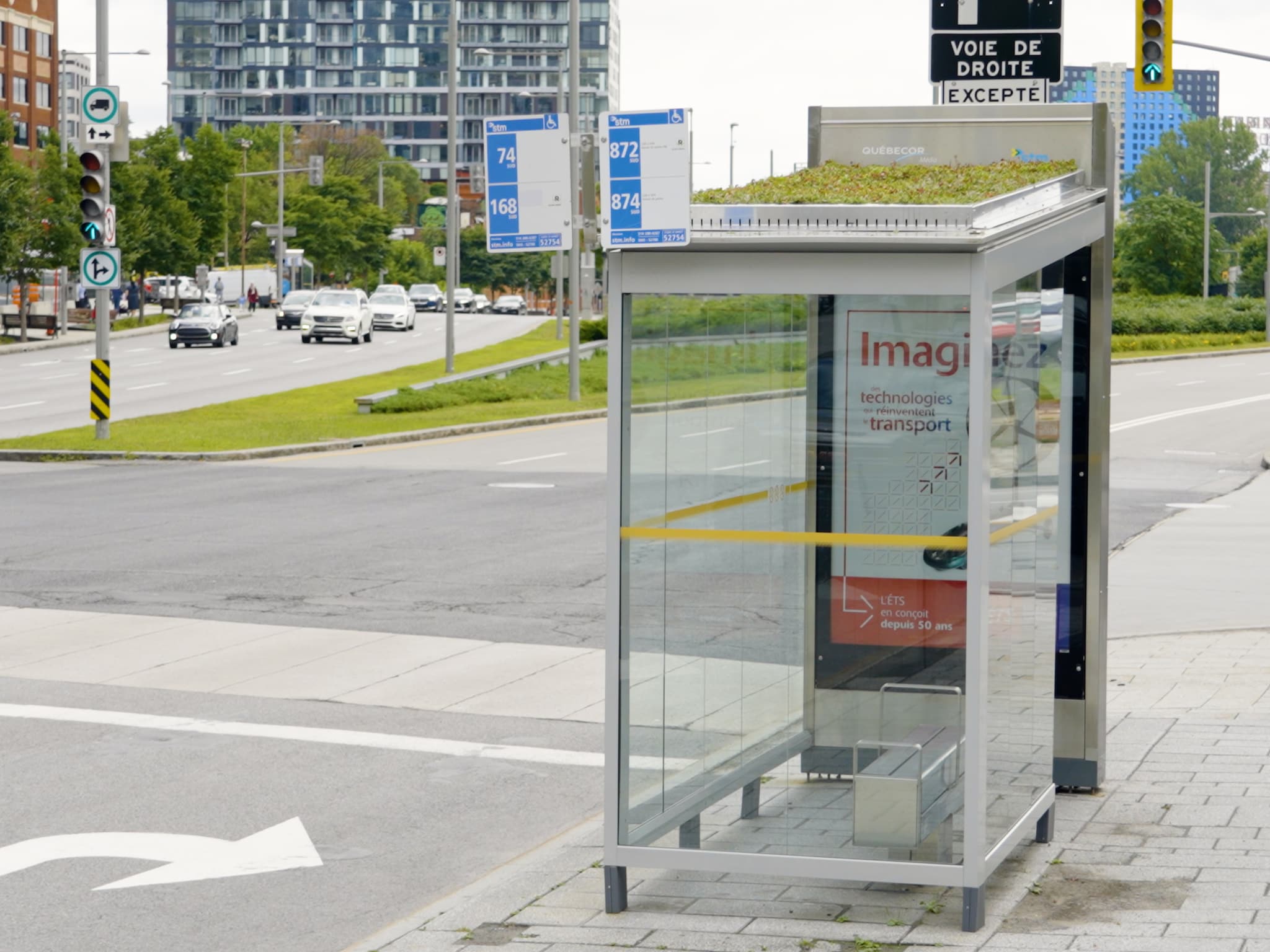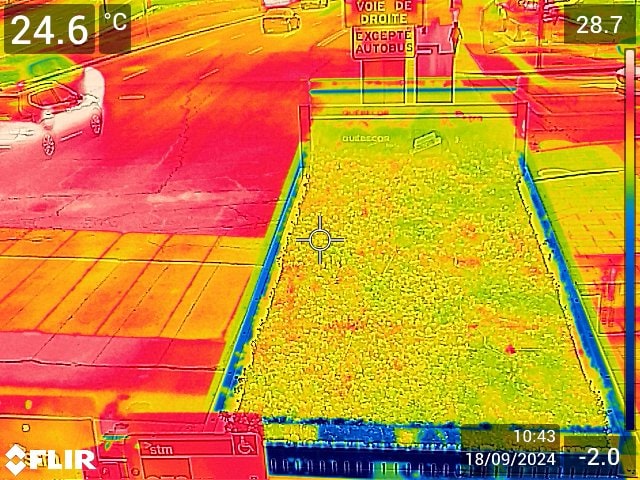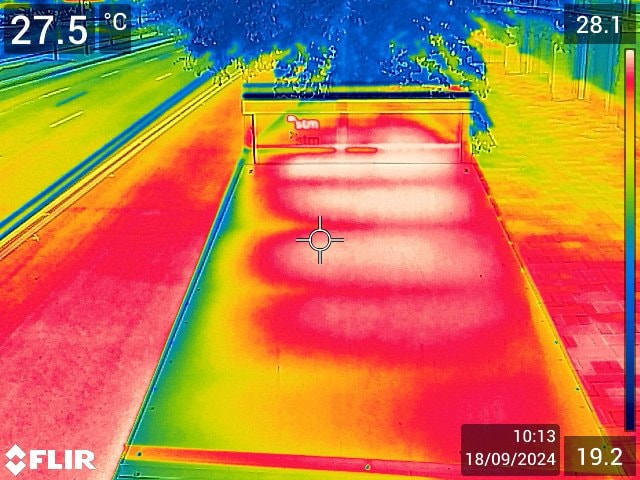At the bus stop, a living ad for nature
Warning: This graphic requires JavaScript. Please enable JavaScript for the best experience.Bus shelters tend to be practical, utility-oriented, no-frills structures. They offer protection from the elements. Seating for while you wait. Maybe an ad to grab your attention.But a green bus stop movement is seeking to make them something more: Antidotes to the heat-island effect. Habitats for native pollinators. Living advertisements for incorporating nature into the built environment.These installations were first popularized in the Netherlands, which has almost 1,000 of them. They have been sprouting across Europe, as well as in Japan, Singapore and Canada, among other countries. The biggest U.S. collection is in Boston, which fitted 30 bus shelters with green roofs last fall. This year, green bus shelters are planned for two Maryland towns, Bladensburg and Edmonston. There also have been proposals to install them in Arlington, Virginia, and New York.A bus shelter with a green roof in Utrecht, Netherlands. (Bauer Media Outdoor Europe)A green roof bus shelter in the Ville-Marie borough in Montreal. (CNW Group/École de technologie supérieure)Green roofs on buildings have become even more common in many cities around the world, and those larger surfaces stand to have more environmental impact than a relatively tiny bus shelter. But roof plantings are often out of view from the street. Cultivating a garden on a bus shelter can influence how people perceive the world as they make their way around town.Green bus shelters can also add up. The city of Boston estimates that if all 8,000 of its bus stops featured living roofs, it would amount to about 17 acres of green space — that’s the size of nearly 13 football fields.The ingredients of a green bus stopGreen bus shelters typically involve five key components.(The Washington Post; iStock)(Zachary Balcoff/The Washington Post; iStock)1: Rigid structureA green roof structure needs to be able to support a lot of weight — not just soil and vegetation, but water after a heavy rain.So retrofitting an old bus shelter roof may not be sufficient. “You don’t want to put a green roof on a roof that’s, say, 15 to 16 years old. Ideally, you want to put it on a brand-new roof,” said Chase Coard, founder and CEO of Ecospaces, a green roofing company in Washington.2: Root barrierNext comes the root barrier: an impermeable fabric, plastic or rubberized material that will restrict the downward growth of the plants.3: Drainage and retentionOn top of the impermeable layer is the drainage mechanism, designed to collect and store rainwater for the benefit of the plants and slowly release the excess in a way that doesn’t overwhelm city drains.4: SoilThe depth of this layer will determine how many native plant species can thrive and how heavy and costly the green roof will be. The soil for a green roof should be more lightweight and mineral-based than typical house plant soil, to increase rainwater retention, according to the National Park Service.5: VegetationNative plants can help support local biodiversity. Zoe Davis, senior climate resilience project manager for the city of Boston, said their selections have attracted butterflies, bees, birds and squirrels.Probably the most common green roof plants are sedums, which are lightweight succulents. “You can basically toss them into really extreme environments and somehow they’ve found a way to survive and thrive off of little soil and little water at times,” said Larry Davis of Green Mechanics, a Maryland company specializing in ecological design.The impact of green bus stopsOne key advantage of green bus shelters is as a counter to urban heat islands. Living roofs can provide more shade than glass roofs, and they don’t absorb and reemit heat the way a blacktopped roof would. Instead, they can hold water long enough for it to evaporate and have a cooling effect.Jean-Luc Martel, a professor at École de technologie supérieure in Montreal, measured temperatures inside traditional bus shelters and ones with green roofs and found a difference of as much as 50 degrees Fahrenheit at peak times.Living roofs have been documented to reduce surrounding air temperatures by up to 20 degrees Fahrenheit.A case study in CanadaA thermal-imaging camera deployed in Montreal shows a bus shelter with a green roof is significantly cooler than one without. This study was conducted in August 2024 as part of an experiment by École de technologie supérieure, a local university. (École de technologie supérieure)For Utrecht, a city in the Netherlands, a goal of building green bus shelters was to address a rapid decline in the bee population. Strategically placed living roofs created “bee lines” and helped keep pollinators fed.The installations may have contributed to a steadying of the bee population, as reflected in a “national bee census” (which involves citizens counting the bees in their gardens for 30 minutes on designated days each year).Some of the green bus shelters in the United States are really demonstration projects. In San Francisco, Philadelphia and East Lansing, Michigan, the idea was to provide information about green roof infrastructure that is often hundreds of feet out of sight.Those novelty installations may affect how people think about vegetation in their surroundings. But it’s when living roofs are installed on a larger scale that they may start to have real environmental effects.“It’s the accumulation of those small, small things you will be doing that will have an impact in the long run,” Martel said.About this storyDesign and development by Zachary Balcoff. Editing by Marisa Bellack. Design editing by Christine Ashack and Joe Moore. Photo editing by Dominique Hildebrand. Copy editing by Shibani Shah. Additional support by Emma Kumer and Carson TerBush.
A movement is installing plants on bus shelters, providing habitats for pollinators and countering the urban heat-island effect.
Warning: This graphic requires JavaScript. Please enable JavaScript for the best experience.
Bus shelters tend to be practical, utility-oriented, no-frills structures. They offer protection from the elements. Seating for while you wait. Maybe an ad to grab your attention.
But a green bus stop movement is seeking to make them something more: Antidotes to the heat-island effect. Habitats for native pollinators. Living advertisements for incorporating nature into the built environment.
These installations were first popularized in the Netherlands, which has almost 1,000 of them. They have been sprouting across Europe, as well as in Japan, Singapore and Canada, among other countries. The biggest U.S. collection is in Boston, which fitted 30 bus shelters with green roofs last fall. This year, green bus shelters are planned for two Maryland towns, Bladensburg and Edmonston. There also have been proposals to install them in Arlington, Virginia, and New York.


Green roofs on buildings have become even more common in many cities around the world, and those larger surfaces stand to have more environmental impact than a relatively tiny bus shelter. But roof plantings are often out of view from the street. Cultivating a garden on a bus shelter can influence how people perceive the world as they make their way around town.
Green bus shelters can also add up. The city of Boston estimates that if all 8,000 of its bus stops featured living roofs, it would amount to about 17 acres of green space — that’s the size of nearly 13 football fields.
The ingredients of a green bus stop
Green bus shelters typically involve five key components.
1: Rigid structure
A green roof structure needs to be able to support a lot of weight — not just soil and vegetation, but water after a heavy rain.
So retrofitting an old bus shelter roof may not be sufficient. “You don’t want to put a green roof on a roof that’s, say, 15 to 16 years old. Ideally, you want to put it on a brand-new roof,” said Chase Coard, founder and CEO of Ecospaces, a green roofing company in Washington.
2: Root barrier
Next comes the root barrier: an impermeable fabric, plastic or rubberized material that will restrict the downward growth of the plants.
3: Drainage and retention
On top of the impermeable layer is the drainage mechanism, designed to collect and store rainwater for the benefit of the plants and slowly release the excess in a way that doesn’t overwhelm city drains.
4: Soil
The depth of this layer will determine how many native plant species can thrive and how heavy and costly the green roof will be. The soil for a green roof should be more lightweight and mineral-based than typical house plant soil, to increase rainwater retention, according to the National Park Service.
5: Vegetation
Native plants can help support local biodiversity. Zoe Davis, senior climate resilience project manager for the city of Boston, said their selections have attracted butterflies, bees, birds and squirrels.
Probably the most common green roof plants are sedums, which are lightweight succulents. “You can basically toss them into really extreme environments and somehow they’ve found a way to survive and thrive off of little soil and little water at times,” said Larry Davis of Green Mechanics, a Maryland company specializing in ecological design.
The impact of green bus stops
One key advantage of green bus shelters is as a counter to urban heat islands. Living roofs can provide more shade than glass roofs, and they don’t absorb and reemit heat the way a blacktopped roof would. Instead, they can hold water long enough for it to evaporate and have a cooling effect.
Jean-Luc Martel, a professor at École de technologie supérieure in Montreal, measured temperatures inside traditional bus shelters and ones with green roofs and found a difference of as much as 50 degrees Fahrenheit at peak times.
Living roofs have been documented to reduce surrounding air temperatures by up to 20 degrees Fahrenheit.
A case study in Canada
A thermal-imaging camera deployed in Montreal shows a bus shelter with a green roof is significantly cooler than one without. This study was conducted in August 2024 as part of an experiment by École de technologie supérieure, a local university.


For Utrecht, a city in the Netherlands, a goal of building green bus shelters was to address a rapid decline in the bee population. Strategically placed living roofs created “bee lines” and helped keep pollinators fed.
The installations may have contributed to a steadying of the bee population, as reflected in a “national bee census” (which involves citizens counting the bees in their gardens for 30 minutes on designated days each year).
Some of the green bus shelters in the United States are really demonstration projects. In San Francisco, Philadelphia and East Lansing, Michigan, the idea was to provide information about green roof infrastructure that is often hundreds of feet out of sight.
Those novelty installations may affect how people think about vegetation in their surroundings. But it’s when living roofs are installed on a larger scale that they may start to have real environmental effects.
“It’s the accumulation of those small, small things you will be doing that will have an impact in the long run,” Martel said.
About this story
Design and development by Zachary Balcoff. Editing by Marisa Bellack. Design editing by Christine Ashack and Joe Moore. Photo editing by Dominique Hildebrand. Copy editing by Shibani Shah. Additional support by Emma Kumer and Carson TerBush.

